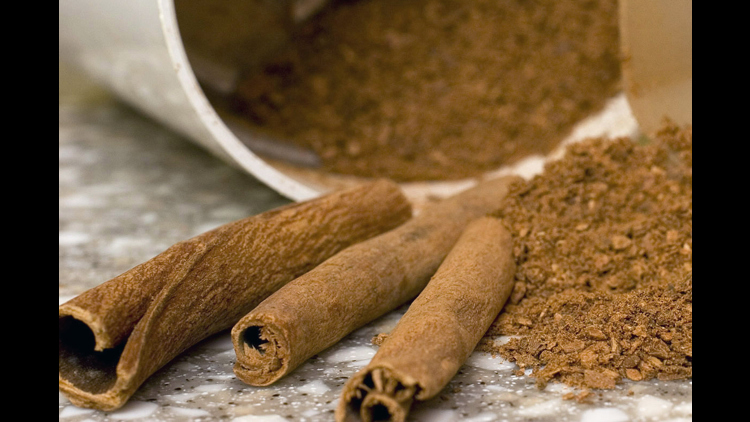UNITED STATES, — U.S. health officials are warning that several types of ground cinnamon sold at certain discount and specialty grocery stores are contaminated with high levels of lead. The Food and Drug Administration issued alerts for at least 10 types of packaged ground cinnamon sold at Dollar Tree, Patel Brothers, Eurogrocery and other stores in several states. Lead levels ranged from a little over 2 parts per million to as much as 20 parts per million, tests showed. There's no current FDA limit for heavy metals in spices, but a trade group calls for no more than 2 parts per million of lead in bark spices like cinnamon.
U.S. health officials are warning that several types of ground cinnamon sold at certain discount and specialty grocery stores are contaminated with high levels of lead and should be discarded.
The Food and Drug Administration has issued its third alert this year, adding at least 10 types of packaged ground cinnamon sold at popular outlets including Dollar Tree, Patel Brothers and Eurogrocery stores in several states.
The FDA has recommended that companies recall the products. In the meantime, consumers should throw away and avoid buying these ground cinnamon products. No illnesses have been reported in connection with these products, the agency said.
Here's what you need to know:
Which brands of cinnamon are affected?
The FDA issued its latest alert Tuesday, naming these brands of cinnamon: El Chilar, Marcum, SWAD, Supreme Tradition, Compania Indillor Orientale, ALB Flavor, Shahzada, Spice Class and La Frontera.
On July 25, the agency issued an alert for El Servidor brand cinnamon. That followed an alert on March 6.
How much lead was found in the cinnamon?
Testing by state programs and confirmed by the FDA found levels of lead that ranged from a little over 2 parts per million to about 7 parts per million in most of the spices, the agency said. The El Servidor brand was found to have a lead concentration of 20 parts per million.
That's far lower than the 2,000 to 5,000 parts per million detected in ground cinnamon in pouches of WanaBana and other brands of cinnamon apple puree that sickened more than 500 U.S. children starting last year.
There is currently no FDA limit for heavy metals in spices. However, the agency has set a limit of 1 part per million of lead in candy likely to be consumed by small children. The American Spice Trade Association, an industry trade group, calls for no more than 2 parts per million of lead in bark spices such as cinnamon.
How does lead get into cinnamon?
Many foods, including spices, contain lead from natural sources such as soil and water, said Karen Everstine, technical director for FoodchainID, a company that tracks food supply chains.
Spices also can accumulate lead from other sources in the environment, such as pollution. Some lead in spices may come from manufacturing, storage or shipping processes.
In some cases, spices have been mixed with substances, including lead, to boost color or weight, increasing the value of the product.
How can lead in spices affect health?
No amount of lead is safe, so it should be avoided, health officials say. Because spices are used in such small amounts, the potential harm of any single use is small, but damage could occur after weeks or months of exposure.
How can I avoid lead in my spices?
It can be difficult, if not impossible, to know whether spices on grocery shelves are contaminated with lead or other toxins, Everstine said.
Consumers should buy spices from companies that have publicly said they monitor their sources. They have a vested interest in protecting their brands, she said.
That can be tough, especially when grocery prices — including spices — remain high. But this is an instance when it might be worth it, she added.



